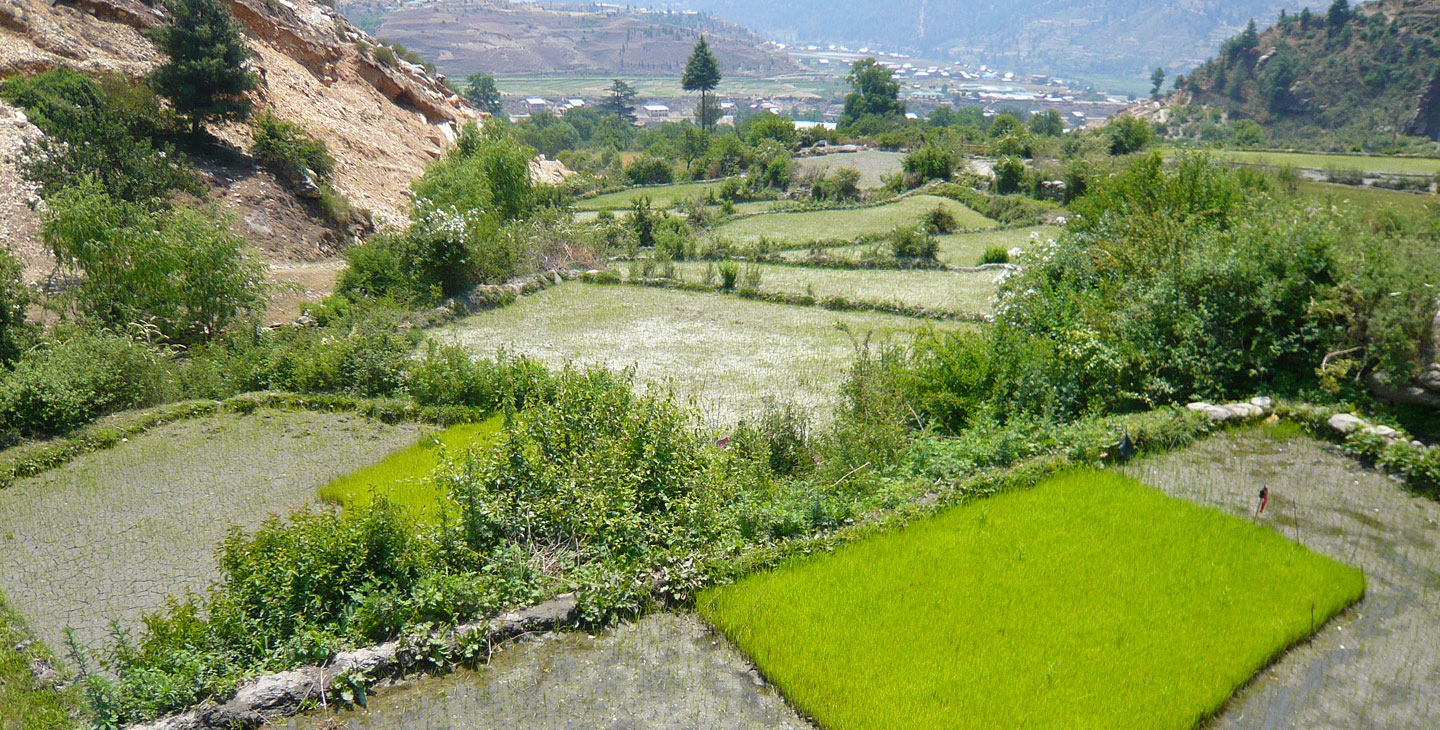Drought-tolerant rice varieties benefit farmers even in non-drought years
IFAD Asset Request Portlet
Asset Publisher
Drought-tolerant rice varieties benefit farmers even in non-drought years
Estimated reading time: 4 minutes
Climate change threatens agricultural production around the world in many ways, endangering the food supply and livelihoods of rural populations. In marginal or unfavourable rice environments, where production is already constrained by stresses like drought, salinity, and submergence, the changing climate poses additional risks. Farmers that lack irrigation and rely on rainfed production are particularly vulnerable to drought. Fortunately, agricultural technologies, such as stress-tolerant rice varieties (STRVs), can help farmers adapt to climate change. STRVs are a type of modern variety developed by plant breeders to resist yield loss due to climate shocks, such as drought and flood.
The IFAD-funded project Consortium for Unfavourable Rice Environments (CURE) was established in 2009 to help rice farmers in South and Southeast Asia increase their resilience to climate shocks. It adapted STRVs to local environments and improved farmers’ access to seed. In the mid-hills region of Nepal, which is susceptible to drought, CURE established seed producer groups to produce and sell high-quality STRV seed to local farmers. By increasing the supply of STRV seed in the region, these groups facilitated adoption.
In 2018, our research team from Virginia Tech received a grant from IFAD to study how adoption of STRVs in Nepal affects farmers’ yields and production practices. Because there was no drought that year, our study sought to determine the yield performance of STRVs in a season with adequate rainfall. Policy makers need to know how STRVs perform under all different weather conditions in order to evaluate whether they are good investments to help agriculture adapt to climate change. While STRVs may be most beneficial in years of drought, how they perform in non-drought years contributes to their overall cost-effectiveness and the likelihood that farmers will continue to grow them.
We interviewed 900 farmers across three districts in Nepal about their rice production in the 2018 monsoon season, which is the country’s main rice season. We collected information on farm and farmer characteristics, and rice varieties grown, yield, and production practices. The STRVs were popular among the farmers; about 20 per cent of the rice seed planted during the monsoon season was of STRVs. This was due in part to the seed producer groups, which increased the supply and adoption of STRVs in their villages and neighbouring villages. Farmers also grew local landraces that have been cultivated for generations and are typically low-yielding, as well as other modern varieties and hybrids, both of which are high-yielding but lack climate resistance. Farmers were excited to tell us about their adoption of STRVs. One farmer, whose land had experienced some water stress that season, showed us two handfuls of his harvested grain; one of a landrace variety and one of an STRV. The landrace grain was discoloured and full of empty husks. The STRV grain looked healthy and, according to the farmer, had yielded well that year. In another village, a village leader told us that farmers in his community were starting to plant STRVs, even though they had not experienced drought, for protection in future years.
We found that adoption of STRVs is beneficial for farmers, even in a non-drought year. After controlling for farmer and land characteristics that could bias our results, we estimated that STRVs increase average yields by almost 30 per cent compared to landraces. This yield effect is about the same as that of other modern varieties, meaning that in addition to protecting against yield losses in bad years, there is no yield penalty of cultivating STRVs in good years relative to other high-yielding varieties. Hybrids achieve even higher yields than modern varieties, but their seeds are costly and may be unaffordable for some farmers. STRVs also reduce yield variance compared to landrace varieties, which neither the other modern varieties nor hybrids do. Finally, adoption of modern varieties and hybrids reduces the time between planting and harvesting and induces farmers to change some production practices, such as applying more chemical fertilizer. This can further help farmers increase their incomes and climate resilience.
In the coming years, climate is expected to become more erratic, making events such as drought increasingly common. Agricultural technologies will play a key role in helping farmers adapt and survive. Our results provide policymakers with evidence of the benefits of STRVs in Nepal. This will help them make decisions and investments to allow farmers in unfavourable rice environments adapt to climate change, protecting their livelihoods and futures.
You can read more about the study in our new IFAD Research Series publication: How the adoption of drought-tolerant rice varieties impacts households in a non-drought year: Evidence from Nepal.
Kate Vaiknoras is a Research Agricultural Economist at USDA’s Economic Research Service. Her research interests include adoption and impacts of agricultural technologies, particularly improved seed varieties.She has c onducted field work in Nepal and Uganda.
The findings and conclusions in this post are those of the author and should not be construed to represent any official USDA or U.S. Government determination or policy. This research was supported in part by the U.S. Department of Agriculture, Economic Research Service. This work was also partially supported by the USDA National Institute of Food and Agriculture, Hatch project VA-160102.
Publication date: 23 March 2021